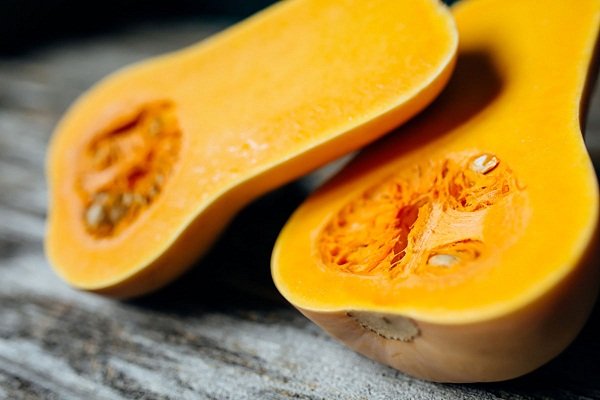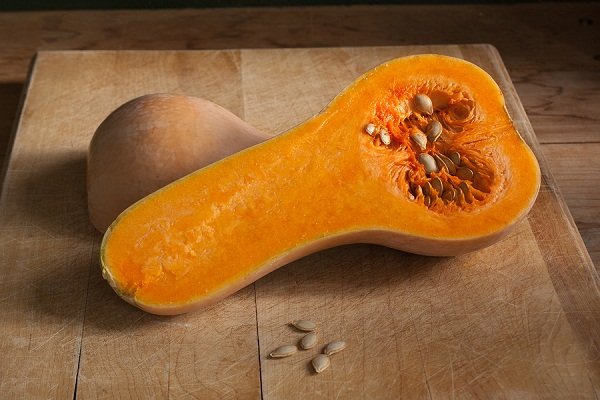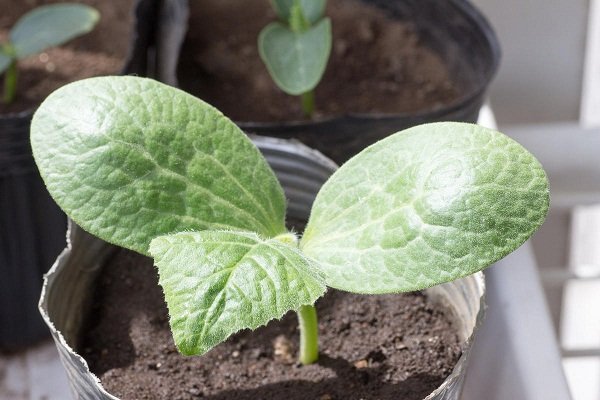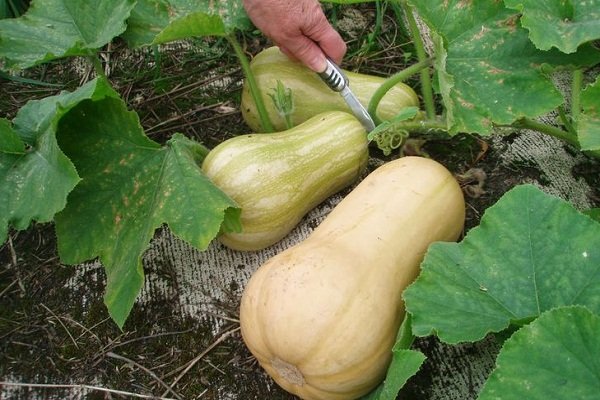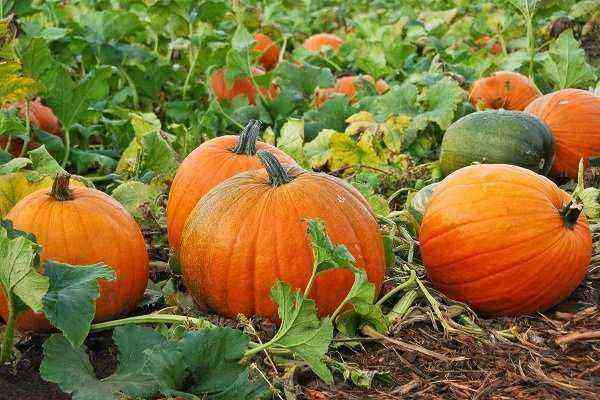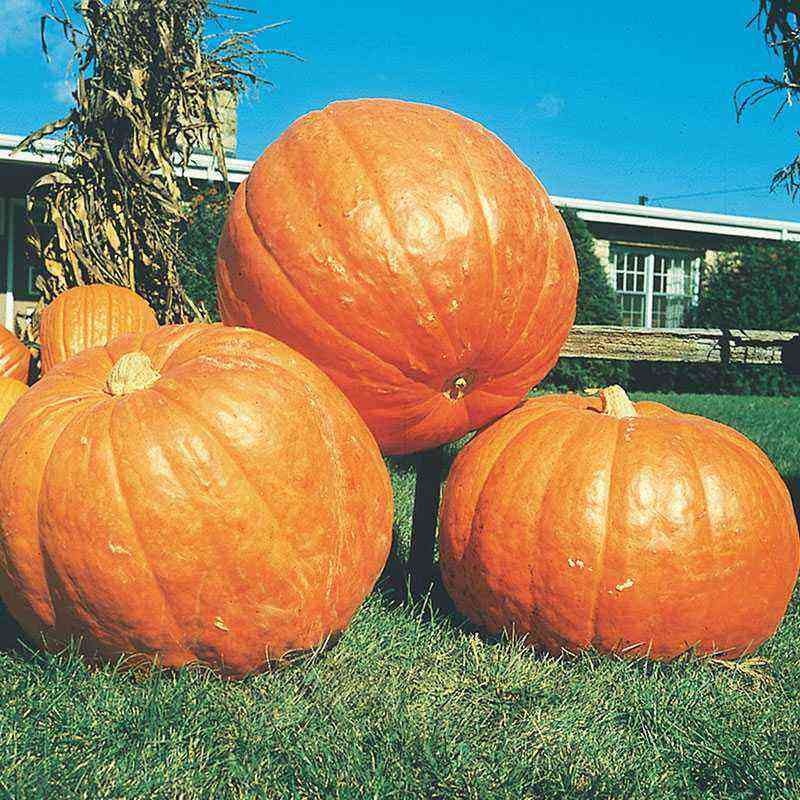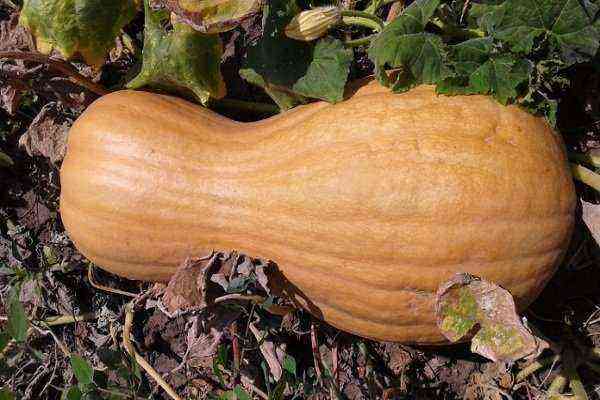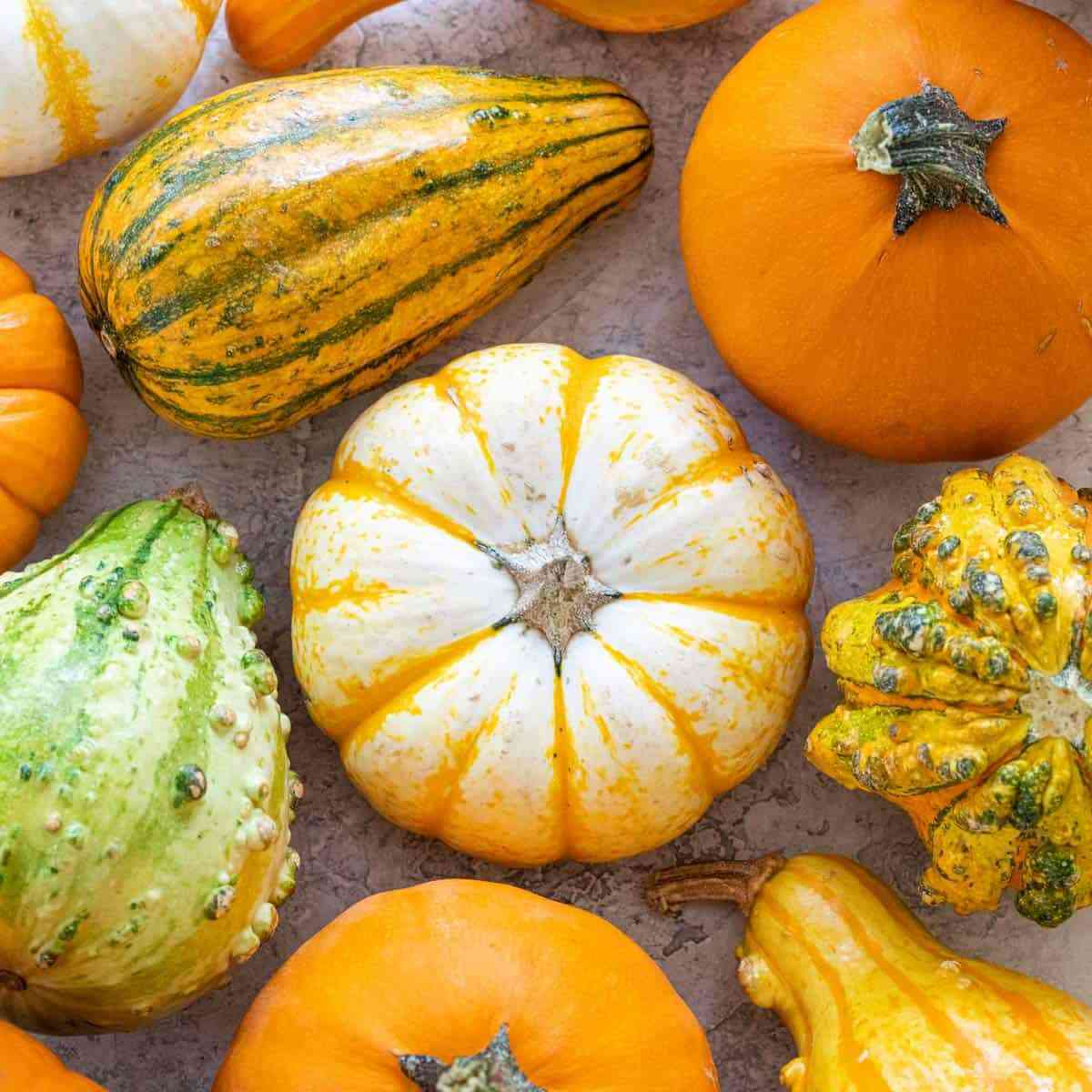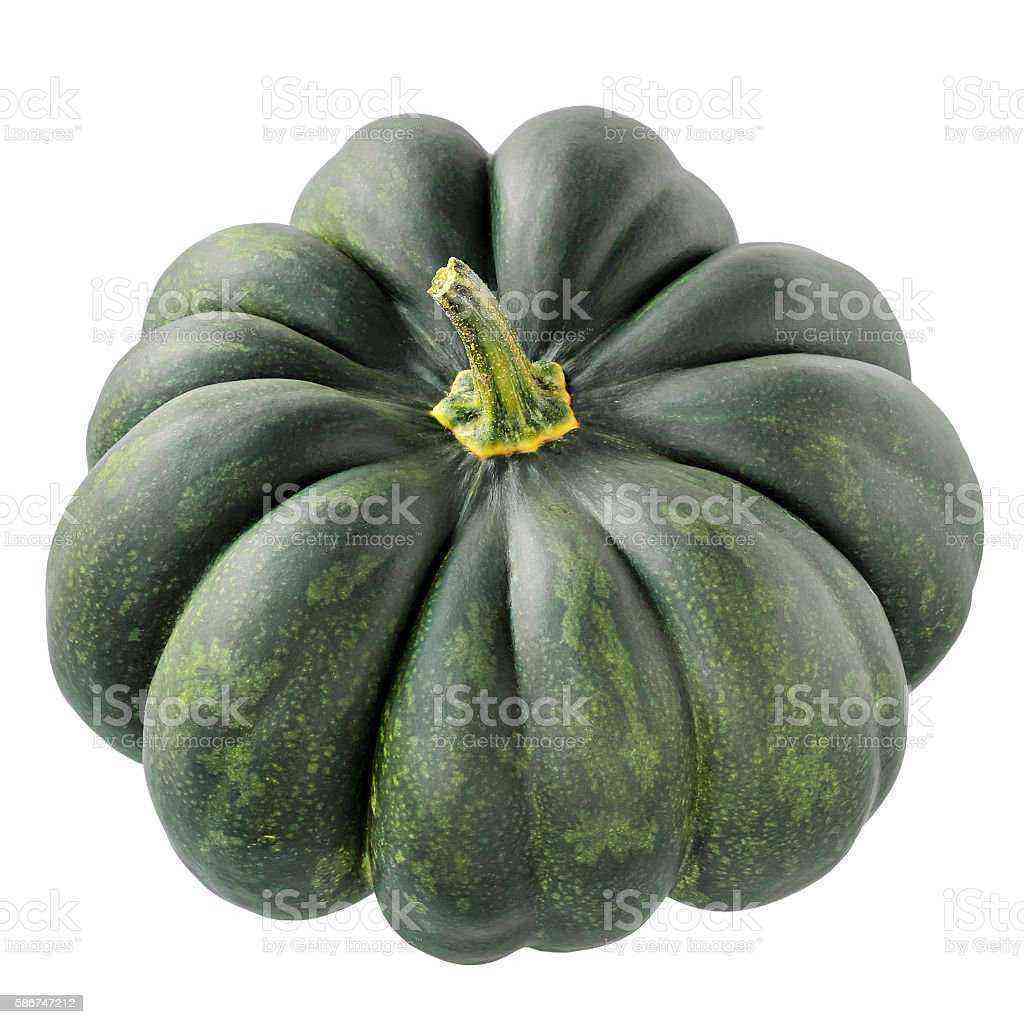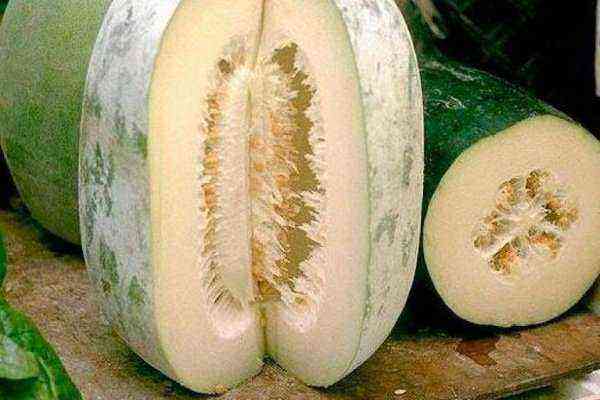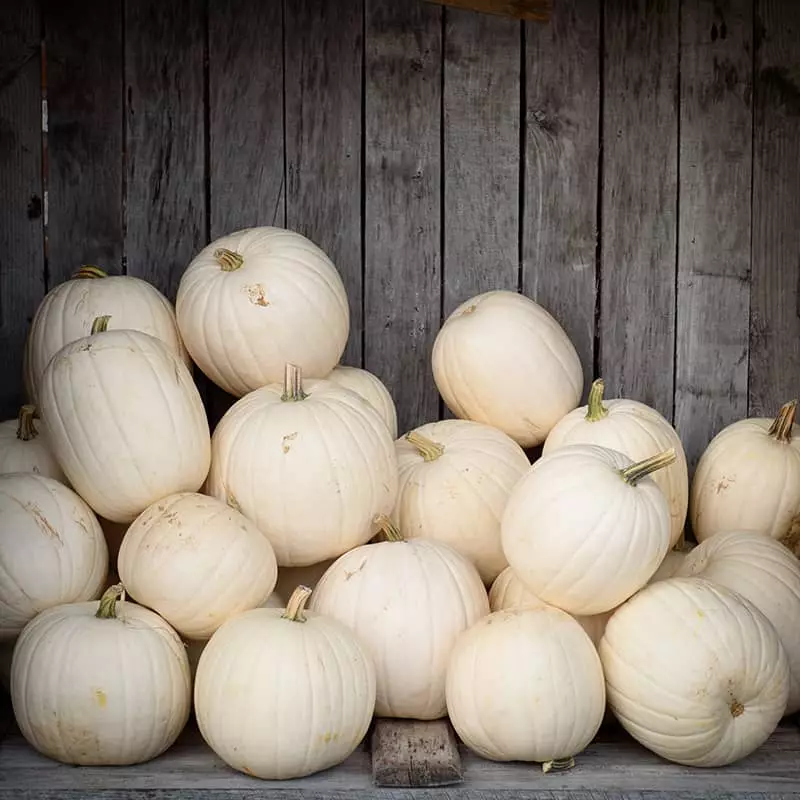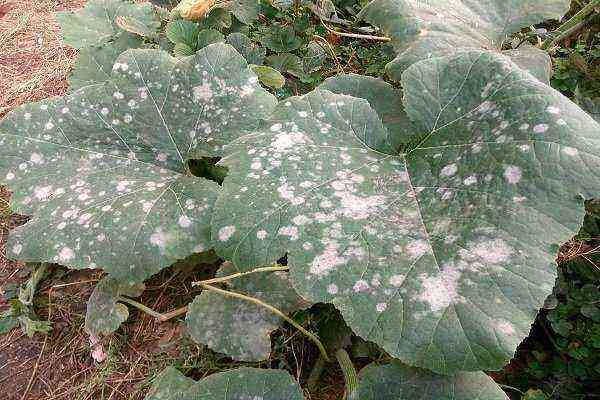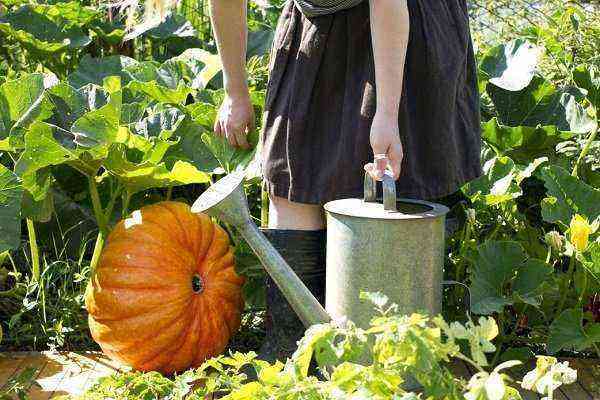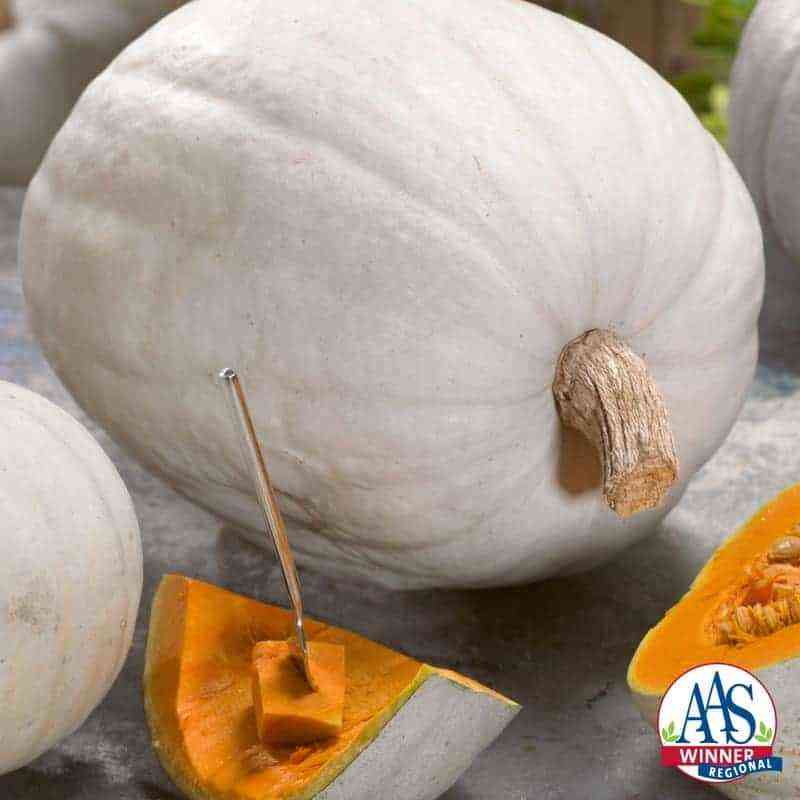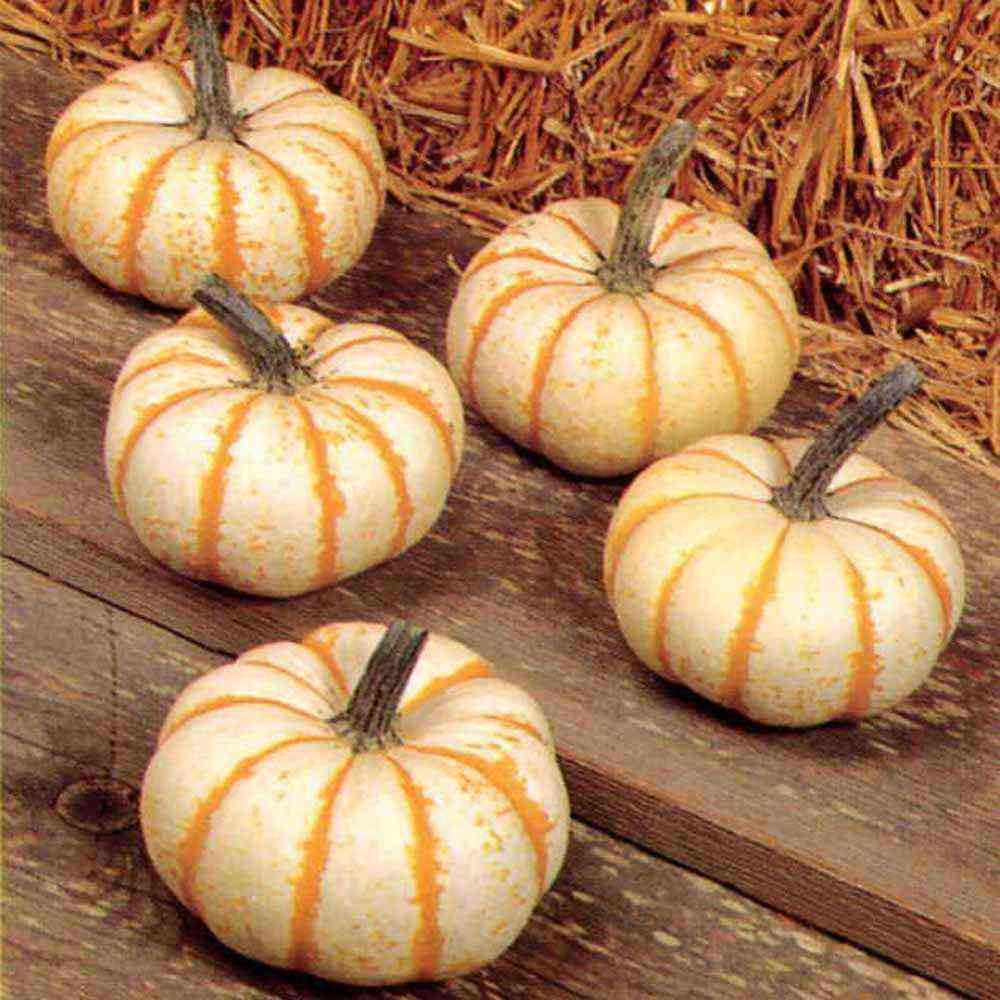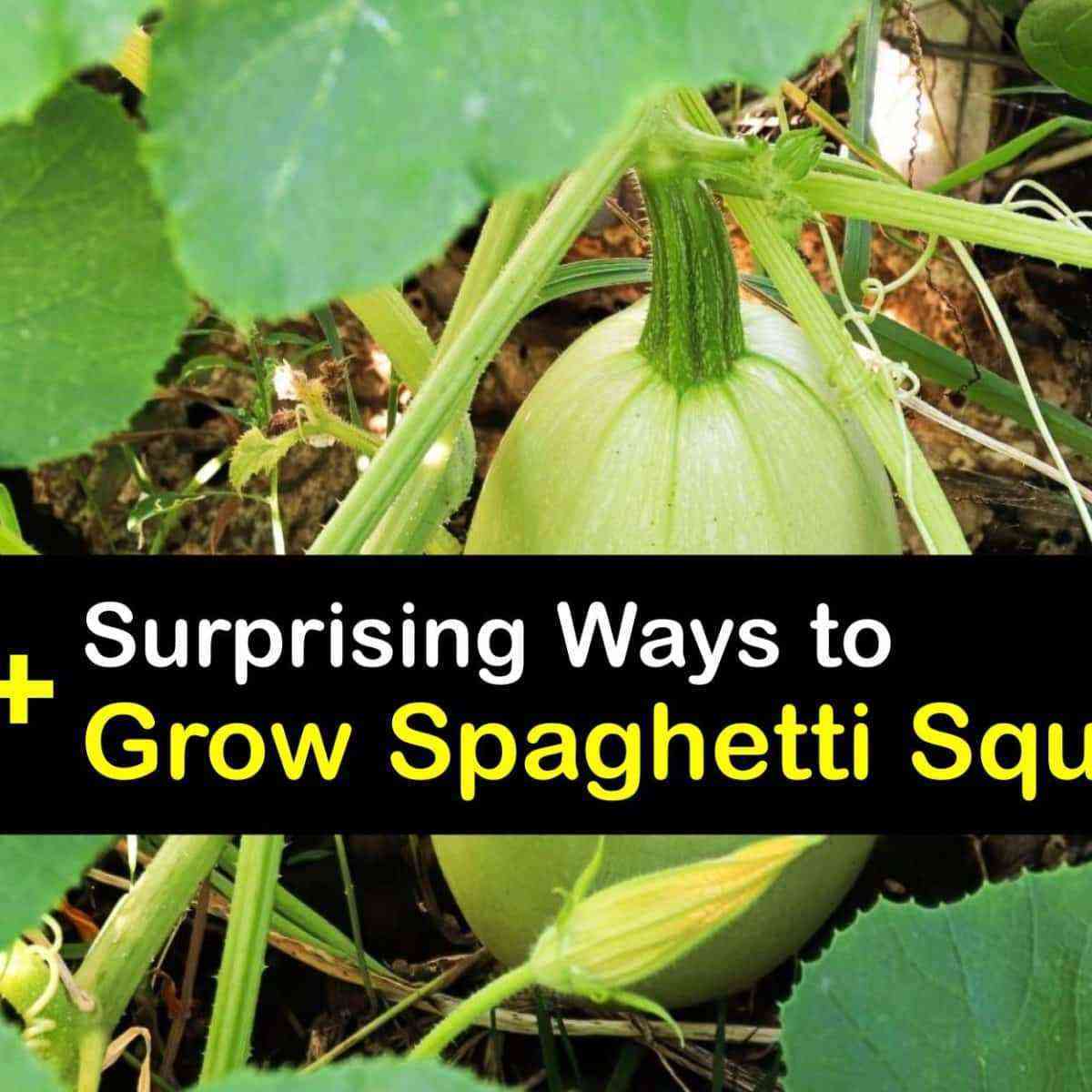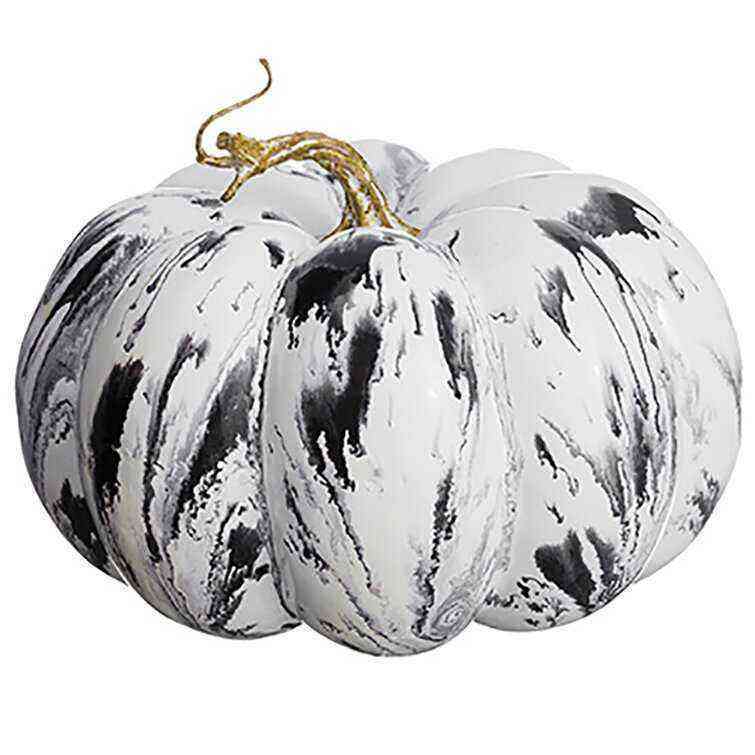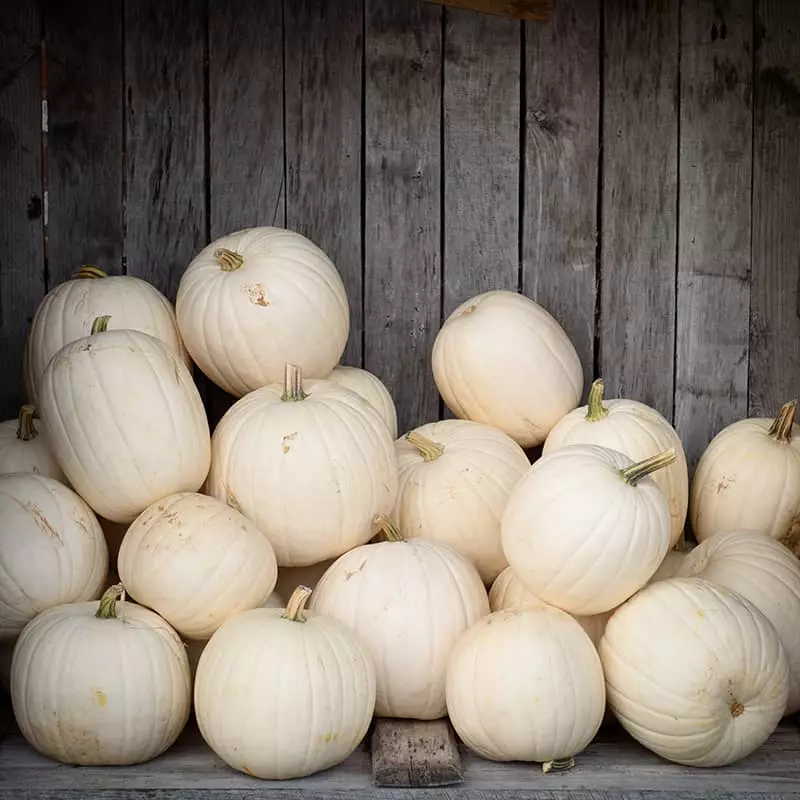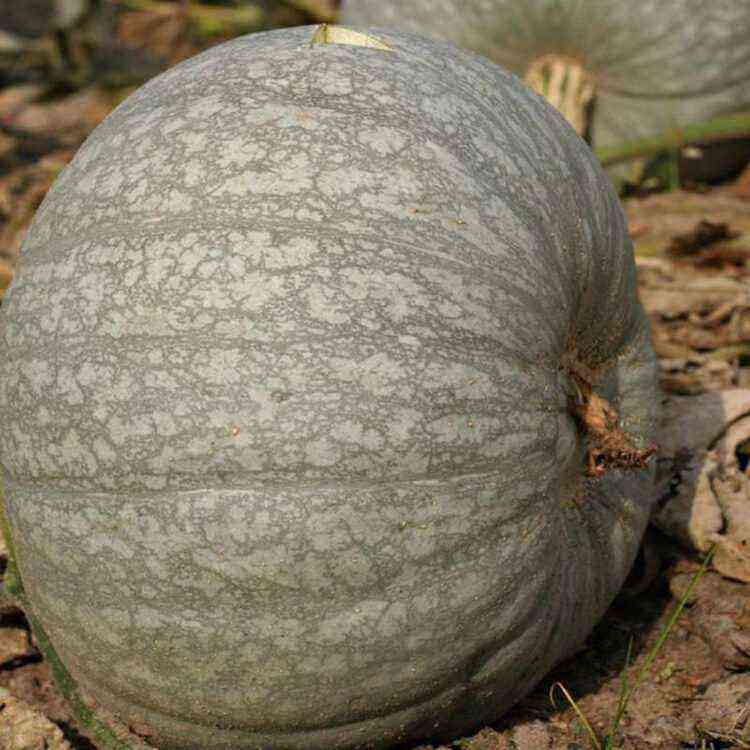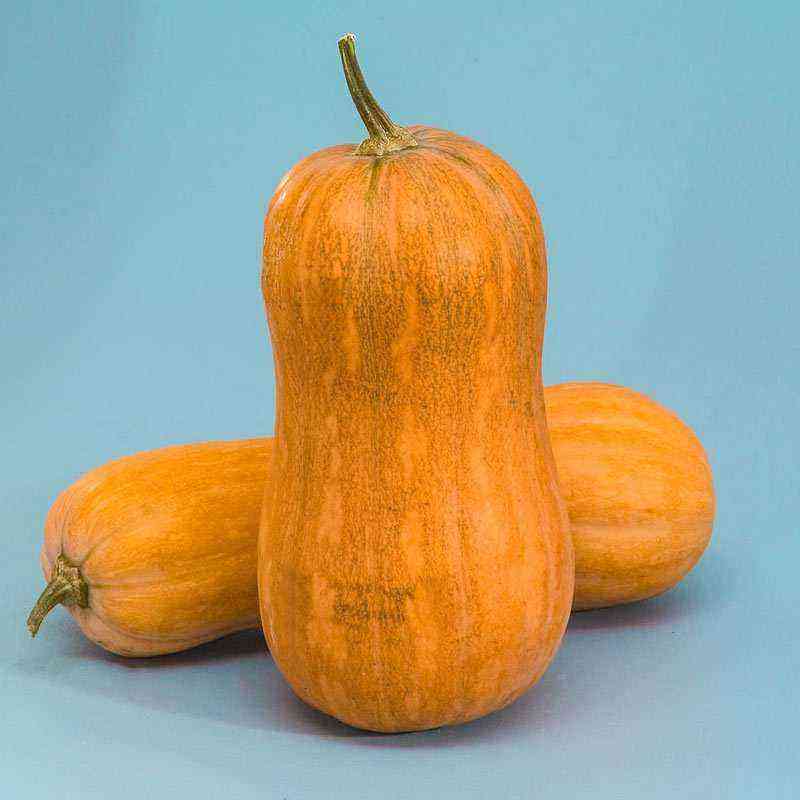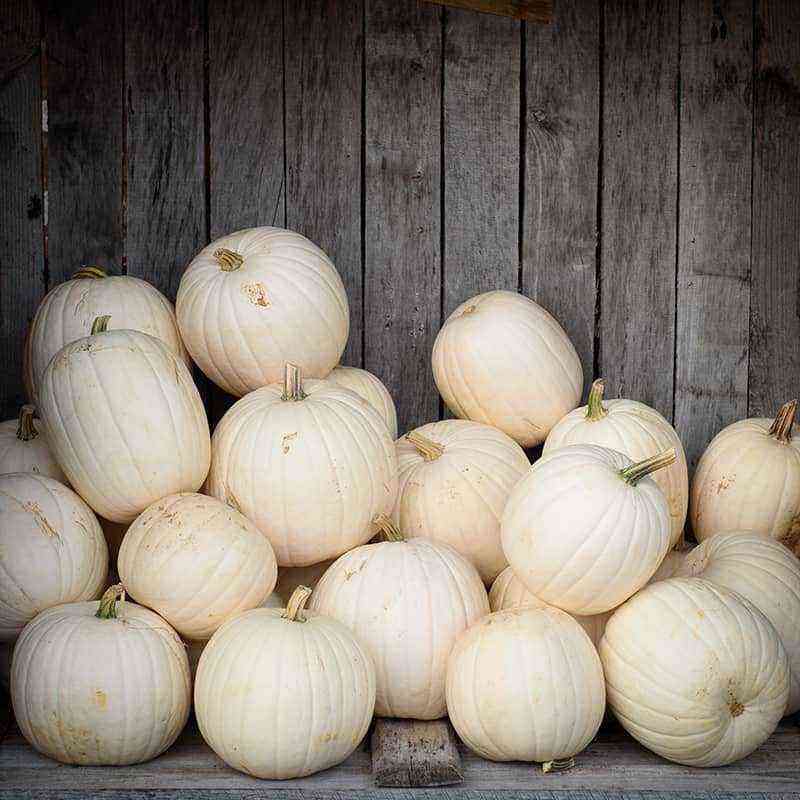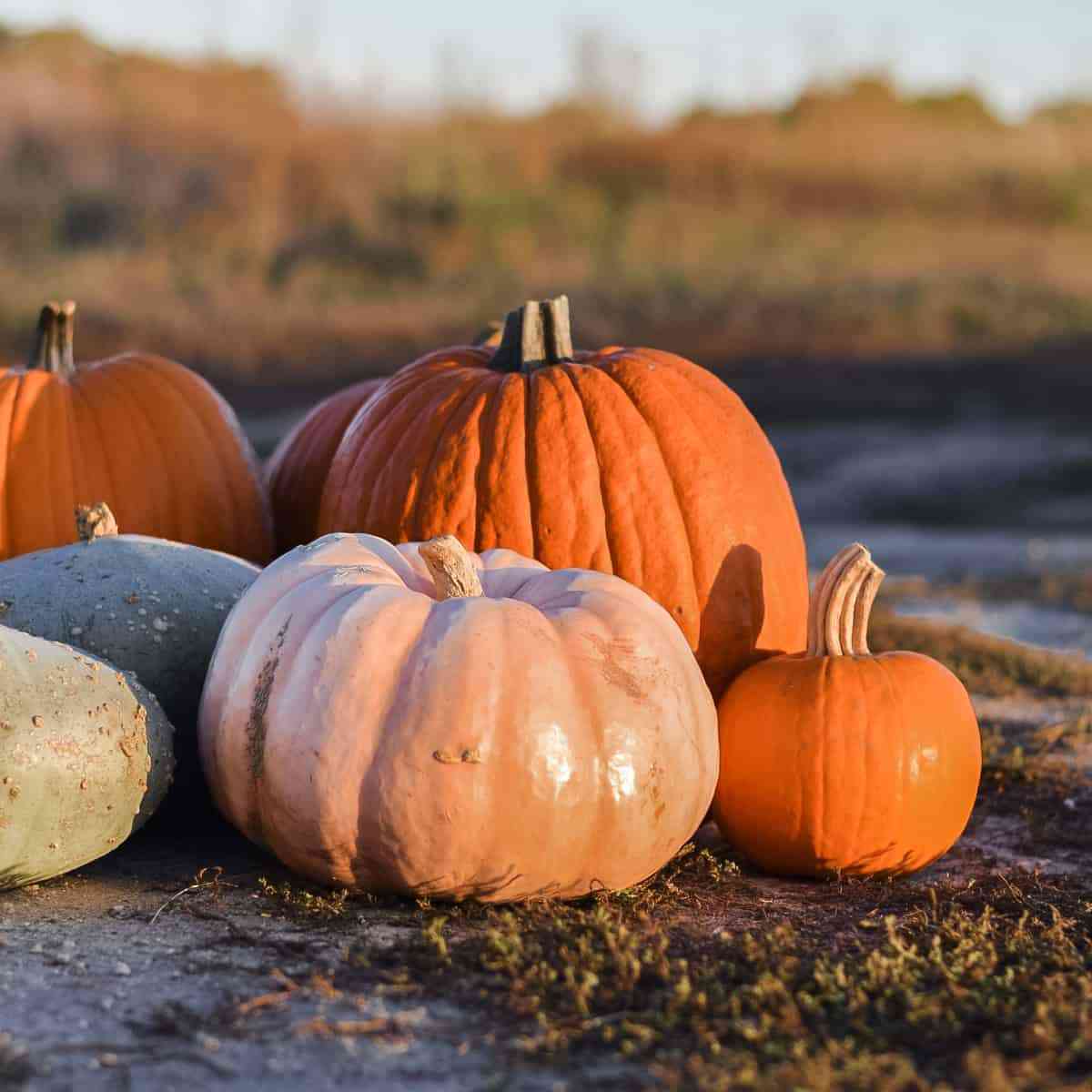Butternut pumpkin has been known on the market for over 50 years, but still does not lose its popularity. It is valued for neat, small fruits, excellent taste and pronounced aroma. You can learn about growing methods, dealing with emerging difficulties and caring for a variety while reading this article.
Pumpkin Buttermat
Pumpkin Butternut has a nutty flavor
Butternut pumpkin has a thin skin
Origin
Refers to artificially bred varieties. Butternut was obtained by American scientists in the 60s of the last century by crossing African and Muscat pumpkins. Today the culture is widespread in Europe. Despite its thermophilicity, the variety is successfully grown not only in the southern, but also in the northern regions.
Description and characteristics
The main features are:
- Form. Pear-shaped – oblong from above and expanded to the bottom.
- Color. Depending on the degree of maturation, it has a delicate or rich orange-yellow color. Inside is a paler shade.
- Bush. Scourges can reach 2,5 m in length. The leaves are large, green.
- Taste. The pulp is juicy, with a pronounced aroma and a slight nutty flavor.
Characteristics are presented in the table:
Weight, kg Ripening period, days Storage, months Productivity, kg per 1 sq. m. Time of planting for seedlings, month Time of transplanting into the ground, month Time of sowing seeds into the ground, month 1,5-2,5 80-90 to 6 15 5 5-6 6
Features of agricultural technology
You can get a good pumpkin harvest only if you follow some recommendations.
Conditions and preparation of the beds
What do we have to do:
- Choose a place. It should be on the south side so that the soil warms up well. Loamy soil would be ideal. It is advisable to plant a pumpkin at the back of the house to protect the crop from strong winds.
- Preparation. In autumn, they dig up the earth and fertilize it with manure. A month before planting, half a bucket of humus mixed with 2 cups of ash is added and covered with a film. Before landing, they dig again.
- Precursor cultures. A plot where potatoes, onions or cabbage used to grow is suitable.
You should not plant a pumpkin in the ground in which melons used to grow. It could contain diseases and pests that harm plants.
Seed preparation
What actions to take:
- Drying. For a month, keep the seeds next to the battery or stove so that they warm up.
- Sort. Remove small and empty seeds. To do this, fill the glass with water, pour the seeds into it and remove the floating ones.
- Protection. For 30 minutes, dip the seeds in a solution of low concentration potassium permanganate.
- Hardening. Wrap in a damp cloth and refrigerate for 2-3 days.
Growing seedlings
How does this happen:
- Capacity selection. Better use peat pots or individual plastic cups.
- Soil mixture. Fill containers with store-bought seedling mix.
- Landing. Make a hole 4-6 cm deep and put 2 seeds in it.
- Completion. Sprinkle the seeds with earth. Moisten the soil with a sprayer. Cover with transparent film. Remove it when shoots appear.
- Pick. After germination, pinch off the weaker sprout.
Care of seedlings
What is needed:
- Right place. Move the containers to a well-lit window sill.
- Temperature. Maintain between 23-25 degrees until sprouts appear, then lower to 18-22.
- Moisturizing. Water with room temperature water as the soil dries out.
Transplant into the ground
What are the rules:
In the north, a greenhouse is being planted.
Sowing in open ground
In this case, it is better to make holes in advance, when preparing the soil.
Procedure:
- make holes in the ground according to the scheme, as when planting seedlings about 5 cm deep;
- plant 2 seeds;
- sprinkle with soil, water;
- in cold or windy weather – cover with a film;
- after germination, remove the sprouts of the weaker plant.
This method is suitable only for the southern regions.
Care
Butternut needs good care.
Watering
Recommendations:
- Frequency. In hot regions, it is produced up to 4 times a week, if the climate is cooler, 1-2 times may be enough.
- Water. It should be at room temperature, it is better to take settled.
- Way. Water the pumpkin under the root.
- Amount. About 5 liters per pumpkin.
It is impossible to allow both the drying of the soil and waterlogging.
Weeding and loosening
Produced as weeds appear. When the lashes are formed, this should be done more carefully so as not to damage the plant. Usually weeding is carried out before watering, and loosening – after.
Feeding
You need to make at least 3 dressings for pumpkin:
- 1-aya. When transplanted into the ground. Humus mixed with soil.
- 2-aya. As soon as the ovaries are formed. Mullein, diluted with water in a ratio of 1 to 3.
- 3-я. The appearance of fruits. Any organic.
Shrub formation
It is recommended to pinch the central shoot and grow 2-3 lateral lashes. To make the fruits larger, leave no more than 2 ovaries per lash.
Possible difficulties
Among the problems that may arise:
- Growth. The bush needs a large area. It is best to put a trellis on the site.
- Temperature. In the greenhouse and in the garden should be maintained within 15-25 degrees. Without heat, the pumpkin does not grow well.
Pests and diseases
Butternut is especially dangerous:
- Powdery mildew. Causes the leaves to dry out. For prevention, spray with a solution of copper sulfate (1%).
- White rot. Plants are covered with white spots that turn black over time. The affected areas must be cut off and sprinkled with ash.
- Root rot. Refers to fungal diseases. It occurs when watering conditions are not met sufficiently. The plant begins to rot from the root and then dies.
- Spider mite. Sucks the juices from the leaves, and then wraps them in a veil of cobwebs. As a result, crops die. Spraying garlic infusion will help.
- Melon horn. The parasite causes the leaves to rot and curl. It starts up in the presence of weeds on the site, so it is recommended to pay special attention to their timely removal. It is also better to treat the pumpkins with a mild soapy solution.
Harvesting
The technology is as follows:
- Time. In September, before the onset of frost. It is better to choose a warm, sunny day.
- Way. Trim with a sharp knife, leaving 5 cm of the stalk.
- Storage. Store pumpkin in a dry, cool place.
Advantages and disadvantages
Among the advantages:
- Benefit. The pulp contains many vitamins and important elements, so Butternut is used in dietary and baby food.
- Taste qualities. It can be eaten in any form, even raw.
- Convenience. Vegetables have thin skins that are easy to peel off.
- Seeds. Concentrated in the lower part of the vegetable, the top is the pulp.
- Pollination. With the correct formation of pumpkin bushes, they do not need artificial pollination.
The downside is the sensitivity. Pumpkin growth can be adversely affected by non-compliance with planting conditions and temperature changes.
Reviews
To learn more about Butternut pumpkin, reviews from people who have already grown this type of crop will help:
Elena, 51 years old. I have been growing this variety for over 5 years. We have a favorable climate and good soil in the region, so I do not experience any difficulties. Pumpkins are small, neat and very tasty. The main thing is to take care of pest protection in advance. Maria, 62 years old. Planted Butternut for the first time last year. It took a little fiddling, but I really liked the result. Pumpkins make delicious soups, cereals and casseroles. And the granddaughter did eat it raw. Gennady, 59 years old. I have been planting Butternut for several years in a row. My wife loves this variety very much, she says that it is easy and quick to prepare. And I like the shelf life, pumpkins can lie in the cellar until almost summer.
To get a good harvest of butternut pumpkin, you need to choose the right site, prepare seedlings in a timely manner and do not forget about quality care. Only if all the recommendations are followed can you grow tasty and healthy vegetables.
